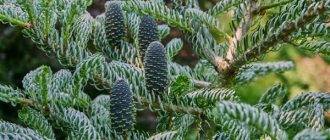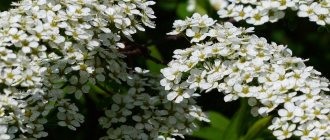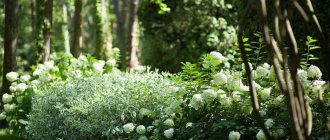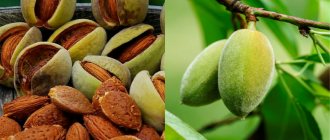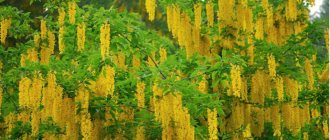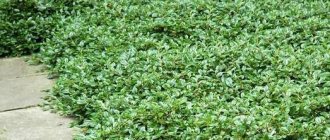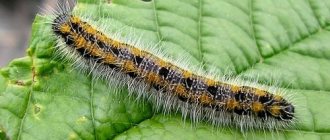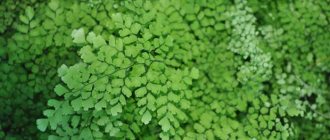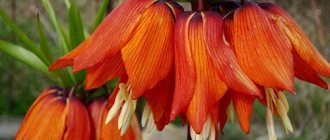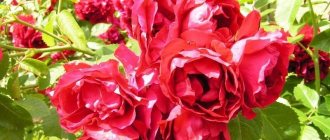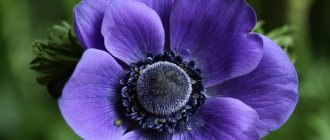Selection of varieties by groups and cultivation characteristics
In order not to make a mistake with your choice, before purchasing, it is important to familiarize yourself with the individual properties of each specimen. First, find out everything about the type and variety, and then purchase it.
Hybrid rhododendrons are the most popular in ornamental gardens
Garden azalea is an outdated name for open ground shrubs. Recently they are called rhododendrons.
For ease of cultivation, experts divided the shrubs according to the following characteristics:
1 Deciduous , those that lose their leaves in the fall, like most shrubs of the botanical division of angiosperms
2 Evergreens are covered with leaves all year round. Growth renewal occurs gradually, replacing old leaves with young shoots
Based on the results of sales statistics, it has been established that domestic gardeners willingly buy hybrid rhododendrons. Thanks to breeding, it is possible to choose varieties of different colors and sizes. Among them there are dwarf forms and large shrubs.
The following assortment is popular:
Large-flowered
Large-flowered Berryrose is an azalea with a wide, straight silhouette of a dense crown. The flowers are pink with yellow splashes.
Kilian, Il Tasso, Strawberry Ice have different shades of pink.
Canon Double - triple-colored variety. Flowers in shades of yellow, cream and pink. Green buds are reddish.
Xardas are light-loving shrubs of medium size, up to one and a half meters. Spectacular double flowers are filled with fiery orange color. They have a strong pleasant aroma.
Diorama, Doloroso, Fireworks, Fireball, Gibraltar, Golden Eagle are varieties with different shades of orange.
Janita, Nabucco - hybrids with red flowers.
Japanese
Japanese Allotria, Bubushka, Eisprinzessin, George Ahrens, Roccoco - are distinguished by bright crimson shades.
Elsie Lee, Ledicanens - varieties with lilac flowers.
Multiflora
Multi-flowered Album Novum, 3 m high, blooms in May and June with white flowers.
Alfred - average bush size - 1.5 m, purple flowering.
America is a vigorous shrub up to 4 m high, with bright red large flowers and an exceptionally frost-resistant variety.
Bel Canto is an evergreen hybrid with an average growth force of 1.20 m in height. The inflorescences are golden yellow. It is recommended to plant in cozy places protected from the wind.
Kolsap is a bush with a dense crown and a wide straight silhouette. The average height is 1.30 m. The color of the flowers is double, the middle of the bud is purple ruby, the edges are white. The outer side of the petals is purple. It blooms much earlier than most rhododendrons in early May. It has good frost resistance.
Eskimo is a bush with a dense crown, spherical in shape. By the age of 10 it grows up to one and a half meters. Large light green leaves fall off in the winter. The flowers are white with a delicate lilac tint and a greenish-yellow spot in the middle of the inflorescence.
Evergreen Foresta
Evergreen Foresta Bad Elzen is an evergreen low-growing bush, hemispherical in shape. The leaves are light green, leathery, small. Intense red bell flowers bloom in the first half of May. Needs shelter for the winter.
Scarlet Wonder is a stocky rhododendron with lush evergreen foliage. By the age of 10 it grows up to 50 cm in height and 120 cm in width.
Late spring frosts are extremely dangerous for a hybrid!
Yakushimanskaya (dwarf varieties)
Rhododendron yakushimanis (dwarf varieties) Daniella - Shrub in the form of a flattened ball, up to 1 m high. The flowers are salmon pink along the edge with a white center inside the bud.
Nicoletta. The color of the flowers changes as they bloom. At first they are white and pink, then they become pure white.
Blue Tit, Butchlovais, Elite are lilac-flowering varieties of azaleas.
Prince Anne with pale yellow flowers.
The listed hybrids bloom by the end of May, beginning of June. The assortment was selected according to the “Plant Catalog of the Union of Polish Nurseries”, Warsaw – 2013.
Despite the huge variety of breeding forms, their requirements for growing conditions are similar to each other, but differ from most garden plants. For this reason, they are planted separately from other crops. The exception is coniferous trees and deciduous shrubs that grow in acidic soil.
Choosing a suitable plot in the garden, taking into account individual characteristics
Large varieties of azaleas grow over three meters in height and width
In nature, rhododendrons grow in forests under the openwork shade of trees and shrubs.
Modern garden hybrids with bright flowers need:
- there is a lot of light , but they cannot stand the scorching heat. Light exposure is preferable, direct sunlight is allowed in the morning, and protection from heat in the afternoon. It is better to place the plant on the northeast side of the fence or house, then it will be protected by shade in the afternoon. In an open place with bright light, flowering does not last long, about a week. In partial shade, the flowers will last about a month.
- Azaleas do not tolerate sudden gusts of wind or occasional drafts . For successful growth, they need a cozy place, protected from turbulence, and at any time of the year. Therefore, it is important to take into account seasonal changes in the wind rose.
- large specimens are negatively related to the high location of groundwater . Prolonged flooding of the roots leads to the death of the plant. If in the spring the water in the area rises above 1 m to the surface of the ground, it is better to choose low-growing varieties. For large rhododendrons, it is necessary to pre-drain the area.
The area around each heat-loving azalea should be sufficient to freely cover the bush for the winter.
Garden azaleas: planting and care
Preparing the soil mixture for planting
There is a wide selection of soil mixtures for rhododendrons on sale.
When a place for an azalea has been successfully selected, you should take care of the optimal soil for it. Its composition is radically different from the universal soil for most ornamental plants and is a peat-coniferous substrate with an acidic reaction.
The easiest way to purchase it is in specialized garden stores. It is usually sold under the name "Rhododendron Soil". If it is not possible to buy a ready-made mixture, you can prepare it yourself, using natural soil at your summer cottage as a basis.
The main component of nutritious soil for azaleas is high-moor peat. It is a semi-decomposed mass of plant residues, with a rough, fibrous structure. With further oxidation, fermentation, and decay, acidic substances are released, which are necessary for the full growth of heathers.
However, azaleas will not bloom on peat alone. They, like other abundantly flowering plants, need a lot of nutrients. Therefore, the mixture contains components to increase fertility. We will tell you in more detail what their quantity is in different substrates.
Sandy soil optimization
High-moor peat is the basis of the soil mixture for all types of azaleas
The structure of the soil for azaleas provides high aeration and prevents stagnation of water. At the same time, all heathers are moisture-loving plants, so it is necessary to provide conditions that do not dry out like sand, but also do not get wet like clay.
To achieve the required condition for improving sandy soil, add:
- turf or garden soil -2 hours
- high peat –2 hours
- bottom peat – 1 hour
- humus or compost 1 hour
- rotted pine needles – 1 hour
Do not bring in fresh spruce or pine needles. They are of little use. Rotted forest litter of coniferous species is suitable for feeding.
How to Improve Heavy Soil
Improvement of heavy soil
Clay soils need to be loosened. For this, peat is best suited. To save valuable raw materials, it is pre-mixed with coarse sand. Fertility is increased with the help of organic fertilizers.
As a result, the substrate includes the following additives:
- coarse sand – 1 hour
- high peat – 2 hours
- rotted manure – ½ hour
- decomposed remains of coniferous trees – 1 hour
Before planting, all ingredients must be thoroughly mixed.
What to do if the natural soil on the site is peat bog
Rhododendrons in the garden
In such a situation, the entire garden can be planted with rhododendrons and other heathers, since such conditions are most favorable for them.
If groundwater floods the site, reclamation drainage will have to be carried out. Rhododendrons will not withstand even short-term flooding. Another option is the construction of embankment terraces for planting azaleas.
The height of the elevation depends on the size of the variety. For short ones, it is enough to raise the plot by 30–40 cm. Tall hybrids need to provide a soil depth of at least 1 m.
Organic fertilizers in the form of humus and garden soil are added to natural peat to retain nutrients.
Parasites and diseases that can affect rhododendrum
Mealybugs, scale insects, spider mites, bedbugs, weevils, rhododendron flies, snails or slugs can all attack your precious bush.
In order to get rid of gastropods, you first need to collect them manually, and then carry out prevention using the fungicide TMTD or Thiram.
To save the plant from spider mites and bedbugs, treat it with diazinon.
Also, if the pest turns out to be a weevil, be sure to treat the soil around the rhododendron using an insecticide.
Karbofos will help get rid of the remaining pests.
Advice!
To avoid any diseases, it is necessary to treat the plant with Bordeaux mixture in late autumn and March.
All diseases that attack rhododendron, as a rule, arise due to the fact that moisture and oxygen do not reach the roots well.
The most common ones will be:
- cancer
- chlorosis
- leaf spot
- rust
Copper sulfate will help rid rhododendron of spotting and rust.
In order for the plant to be able to escape from chlorosis, add iron chelate to the water you water it with.
If the azalea is defeated by cancer, then you need to cut off all the branches that were infected, leaving only healthy shoots.
Planting technique, features of pit preparation
Azaleas do not tolerate stagnant water, so drainage is built in the planting hole
The place where azaleas grow in open ground can be compared to a large flower pot.
Beginner gardeners are confused by the miniature size of seedlings. Often small holes are dug for them. But, for full growth and colorful flowering, rhododendrons need good nutrition.
Therefore, the planting pit is prepared taking into account the size of an adult plant, which grows in one place for several decades. This means that optimal conditions for planting azaleas and future care must be ensured for the rest of their lives.
The root system of azaleas is not deep, but highly branched. Unlike other shrubs, the holes are wider than they are deep.
Experts recommend the following pit sizes:
| Plant height | Width | Length | Depth |
| Dwarf 30 – 40 cm | 50 - 70 cm | 50 - 70 cm | 50 cm |
| Medium height 80 – 120 cm | 70 - 80 cm | 80 cm | 70 cm |
| Large 1.5 – 3 m or more | 1 – 1.2 m | 1 – 1.2 m | 80 cm |
Work order:
1dig a hole of the required size
2 drainage made of crushed stone and sand is placed at the bottom, with a layer of 10 - 15 cm
The side walls are separated from the natural soil so that when watering, the fertile substrate does not mix with poor soil. This is especially important if the soil on the site is sandy; when compacted, it displaces clay substances, and with them the nutrient medium
The 4th hole is filled with a pre-prepared fertile mixture pH 4.5 - 5
It is better to do the preparation in the fall and plant the rhododendron in the spring. Over the winter, the soil will become compacted, the nutrient fertilizers will rot and the result will be an ideal environment for azaleas.
Immediately before planting, a depression is formed in the planting hole . Its size is twice as large as the seedling's earthen ball. The depth is such that when installed, the root collar is level with the edge of the hole. The plant cannot be buried, otherwise it will die.
To remove the lump from the container without destroying it, briefly submerge it in a bucket of water. As soon as air bubbles stop being released, the plant is removed from the bucket. Holding it with one hand, turn it upside down, and remove the pot with the other hand.
The lump is placed in a hole and sprinkled with soil mixture that was dug out of the hole or with a special substrate for rhododendrons. After planting, water generously so that the soil is wet to the entire depth of the hole.
After the water is completely absorbed, the tree trunk circle is covered with a thick layer of mulch. It is best to use bark, wood chips, and dry sawdust of softwood. Cones and rotted spruce (pine) litter will provide a good service.
Phosphorus-potassium fertilizers are added to the soil mixture for successful rooting. If mineral compounds are used, then these are superphosphate and potassium salt.
Rhododendrons do not tolerate chlorine, so potassium chloride is not used for feeding.
Wood ash, rich in phosphorus, potassium, calcium and microelements, is used as an organic fertilizer. When applying fertilizer, you need to control the acidity of the soil, since ash neutralizes the pH level.
When preparing the soil for planting, either mineral salts or organic fertilizers are added. It is not recommended to combine them.
How to plant a garden azalea
In order for azalea to delight with lush flowering, it is necessary to choose the right soil and planting site. The plant must receive sufficient nutrients and sunlight.
Soil selection
Garden azaleas love highly acidic soil. If the soil is chosen incorrectly, the plant will begin to turn yellow and die over time. It is best to purchase soil for azaleas at a specialty store. This composition can replace the top layer of soil in the selected area.
For planting, 40-50 cm of nutrient substrate will be sufficient, since the flower has a superficial root system.
You can prepare the soil yourself. This will require coniferous soil, peat and sand.
Choosing a place and landing
Azaleas should be planted in areas where there is no direct sunlight. Otherwise, the flowering period will be short and the leaves will be wrinkled. For evergreen varieties, areas with little indirect light or partial shade are best suited.
Garden varieties of azaleas should be grown in areas with flat terrain. Water does not stagnate in such areas. The crop cannot be planted between buildings or on their corners.
It is recommended to plant azaleas in early spring, before the period of active sap movement begins. If the plant was not planted before the beginning of the growing season, then this can be done in September.
The depth of the pit should not exceed 50 cm. The optimal width is 20-30 cm more than the depth. Drainage material is laid out at the bottom. This could be sand, large expanded clay or fragments of red brick. It is forbidden to use limestone chips, as they change the acidity of the soil.
The following is added to the landing hole:
- purified peat;
- humus;
- sand or other material to loosen the substrate.
Before planting a garden azalea purchased in a store, it is necessary to revive the root part. To do this, it is dipped in water or watered abundantly.
Seedlings with a closed root system are easier to transplant.
The roots do not need to be cleared of soil. Before planting, make sure there is no damage to them.
Recommendations for choosing seedlings
In garden centers and nurseries, azalea seedlings are sold in containers
Garden azaleas take root slowly. It is all the more important to purchase high-quality planting material. The success of cultivation largely depends on the seedling. The good condition of the plant and professional advice are guaranteed only by trusted nurseries and experienced gardeners.
Often, novice gardeners, in pursuit of cheap prices, fall into the trap of spontaneous markets and random sellers who offer suspiciously fabulous discounts. This should be alarming. To propagate rhododendrons, they put a lot of effort and money, so the plants cost a lot. It is better to buy one reliable seedling than several dubious ones.
For planting, choose three or four year old plants with densely branched shoots. In high-quality azaleas, tillering begins immediately at the root collar.
Carefully inspect the seedling. If spots or inclusions are noticeable on the leaves, the shoots are thickened in places, and the roots are knotty, then the bush is not suitable for planting.
Seasonal care
Once the azalea has started, caring for it comes down to watering, fertilizing, mulching and pruning. Heat-loving varieties need winter shelter. Learn more about each type of gardening work at different times of the year.
Watering
Preserving biological memory, rhododendrons “remember” the natural conditions in which their ancestors grew, in partial shade and good humidity. This does not mean that modern varieties grow in a swamp.
Although they require watering, soil moisture should be moderate. Avoid sudden changes between drought and stagnation of water.
Sprinkling of the crown in summer is carried out before sunset
The break between irrigations is determined individually. The signal that the plant needs water is a slightly dry top layer of soil.
It is better to water less often, but more abundantly, than more often and little by little.
Enough water is needed to wet the root system to its full depth and width.
They are guided by the following rule:
- 10 liters of water moisten 1 square meter of soil to a depth of 10 cm
- In order for the roots of the dwarf variety to get completely wet, you will need 5 - 8 liters of water per watering
- medium-sized plants are watered 8 - 10 liters
- large bushes – 15 – 20 l
When watering frequently with a small volume of water, only the top layer of soil is wetted. The roots rise to the surface of the earth. And with the onset of the first autumn frosts, they freeze along with the soil and the plants die. Improper watering negatively affects the winter hardiness of azaleas.
In summer, at high temperatures, the crown is sprinkled and the leaves are sprayed with warm water. Irrigation is carried out in the evening at sunset. In scorching heat, the above-ground part of the plants cannot be watered, otherwise burns will form.
The natural color of rhododendron leaves is dark green . If the shade is too light, it means the plants are hot and need to be watered and rained. When irrigation does not help, it is better to arrange shading, for example, in the form of a vertical support, with herbaceous vines. They grow quickly and protect the bushes from excessive heat.
From mid-summer, the frequency of watering is sharply reduced to stop the growth of green mass.
To save water and increase the intervals between waterings, use mulch.
Features of mulching
For mulching rhododendrons, it is better to use fine bark
Unlike other garden crops, azaleas use plant residues, which, when decomposed, acidify the soil.
This:
- bark
- wood chips
- thoroughly dried sawdust
- forest litter their needles and cones
It is important that the listed raw materials belong to coniferous trees and shrubs.
Another useful material is high-moor peat.
Mulch makes caring for azaleas much easier:
- retains moisture, reducing evaporation
- constantly acidifies the soil and feeds the plants
- protects against weeds, which is especially important since rhododendrons have a shallow root system that does not tolerate competitors
From time to time the mulch needs to be loosened. Overcompaction causes the development of fungal pathogens that love moisture and warmth. If mold appears, the material must be replaced.
In addition to mulching, azalea needs additional nutrition. During different periods of the growing season, the composition of fertilizers changes.
Fertilizing in spring, summer, autumn
Garden centers sell special formulations for caring for rhododendrons. At first glance, it seems that there is nothing complicated about feeding azaleas. However, common mistakes often occur.
Mineral fertilizers are easy to use, you just need to strictly follow the instructions
To avoid them, you need to consider the following care features:
1 young plants are fertilized exclusively with liquid solutions. Then the nutrients are absorbed evenly and do not cause root burns
2it is important to adhere to the required composition of fertilizers during different periods of the growing season
3do not exceed the application rate, this leads to the death of plants
4The use of ammonium nitrate is strictly prohibited due to its explosiveness when interacting with dry peat, bark, and pine needles
5The addition of calcium-containing substances neutralizes the acidic soil environment necessary for rhododendrons. Therefore, they are excluded from care
62 – 3 times a year you need to check the acidity of the soil and, if necessary, adjust the pH level
Never use ash, calcium nitrate, lime, chalk, dolomite flour, limestone powder, or ground bird egg shells.
Learn more about what fertilizers and how much azaleas need.
- In the spring , after the snow melts, when the ground warms up to + 100, a complex composition is applied, for example, “Amofoska”, NPK - 22:11:11. N – nitrogen improves the growth of stems and leaves. P – phosphorus activates the growth of the root system and flower buds. K – potassium, strengthens plant tissue, protecting against diseases and pests. Fertilizer is applied before flowering begins.
A special microflora called mycorrhiza forms on the roots of rhododendrons. For its growth and spread, a special solution is needed that contains a nutrient medium for beneficial microorganisms. “ Rodo-Azalia Azet ” is often added at the beginning of flowering. The feeding is enough for four months.
- In the summer , immediately after flowering, it is important to take care of next year’s flower buds. The planting process occurs shortly after the current year's buds wither.
During this period you will need:
- superphosphate – 20 g/m2
- potassium sulfate – 40 g/m2
If there are no special fertilizers for azaleas, you can use universal formulations for flowering woody plants, for example, “Clean Leaf for Ornamental Shrubs.”
Starting in July, it is important to ensure that there is no nitrogen in complex fertilizers . From mid-summer, the “biological program” of azaleas switches to preparing for winter. The growth of green mass is completed, moisture is retained in the tissues and the root system is strengthened. The processes are facilitated by the addition of phosphorus and potassium, in the same doses as the previous feeding.
In addition, potassium is considered to combat drought . By forming the outer shell of the cell, it reliably retains moisture in the plant tissues. Between summer fertilizing, the acidity of the soil is controlled and, if necessary, the pH is adjusted to 4.5 - 5.
Garden colloidal sulfur is sold in different packaging from a few grams to 5 liters
The following substances are used:
- colloidal sulfur , at an application rate of 100 g per 1 m2. In this case, the acidity indicator moves away from the initial mark by 2.5 units towards acidification;
- iron sulfate changes pH by 1 scale unit, at a dosage of 500 g/m2;
Do not rush to acidify the soil if fertilizing is done with potassium sulfate or ammonium sulfate. These salts cause soil acidification.
The composition of the water for irrigation influences the frequency with which the acid-base balance needs to be adjusted. Rain collection is considered ideal; it contains a minimum of salts that affect the condition of the soil.
Constant soil monitoring will be needed if the area has hard water. It is the one that changes acidity the fastest.
The end of summer, the beginning of autumn is the time for the final fertilization session. During this period, superphosphate and potassium salt are added again. Still, ready-made mixtures for rhododendrons are often used, but unlike spring compositions, they do not contain nitrogen salts, or they are contained in small quantities. If nitrogen provokes the growth of young shoots in the second half of summer, they will not have time to gain strength before the cold weather and will die.
Reproduction
Garden azaleas can be propagated in three ways:
- Seed method. The longest way. Plants are planted in the ground only the next year after sowing the seeds. Seed material is sown in greenhouses and germinated in prepared soil; grown seedlings are planted in separate containers.
- Cuttings. To do this, separate a developed cutting with two or three leaves. The cutting site is treated with a growth stimulator and the cutting is placed in a peat mixture at an angle of 45%. The top of the cuttings is covered with polyethylene material. Further care consists of regular watering and spraying.
- Dividing the bush. In spring, the bushes are carefully divided in half. Both halves must have a developed root system and at least two shoots. The separated plants are planted.
Preparing for winter
Work begins in the summer; immediately after flowering, faded buds are removed. The procedure promotes the formation of next year's flower buds.
If the flowers are not picked off, seeds will begin to ripen. If they are not needed, then it is better to redirect nutrition to strengthening the roots and lignifying the stems.
A popular modern polymer is spunbond.
In the fall, after the final fertilizing, moisture-recharging irrigation is carried out, because it is the last of this season. And there should be enough moisture for 5–6 months, because the next irrigation will only be in the spring of next year. Therefore, you will need three times more water than with regular watering.
Until the end of summer, leaf and flower buds form on the bush; it is important to preserve them in winter. In other words, you need to create all the conditions so that they do not freeze, are not burned by the sun's rays and do not dry out.
Some measures are the same for all types and varieties - this is mandatory mulching for the winter, even if protection was not used in the summer.
Then you should decide on covering the plants.
It depends on which group the azalea belongs to:
- in the cold climate of the Moscow region, the Leningrad region, the Urals and Southern Siberia, evergreen species are covered, they winter worse. They do not tolerate temperature changes well in the off-season. Fear of burns from the harsh winter sun
- deciduous shrubs are more resilient. It is enough to cover them with a thick layer of mulch - peat, heather soil, pine litter
You cannot form a cone from the layer that surrounded the bush in the summer. This exposes the roots and freezes the plant.
A modern polymer, spunbond, is popular.
It is produced under different names:
- Agrofibre
- Agrotex
- AgroSUF
- Lutrex
- Agil
For insulation you will need a white cloth.
Recently, spunbond has been the most popular material because:
- good air permeability
- does not impede moisture exchange, providing optimal aeration
- protects against frost and wind
- increases the temperature under the shelter by 3 – 90, depending on the thickness
- saves plants from sunburn
- the canvas can be used for several years in a row – 3 – 5 years
Plants covered with spunbond do not disturb the decorative appearance of the garden in winter.
VIDEO: Ornamental shrubs that bloom all summer
Garden azaleas: description, varieties, planting and care in open ground, preparation for wintering (50 Photos & Videos) + Reviews
Transplanting garden azaleas into open ground after purchasing
Azaleas can appear in the garden only in the spring, since sale and replanting are possible only during this period. The purchase must be made carefully, it is advisable to pay attention to the following nuances:
- the seedling must be in a special container with soil;
- the soil in the container must be moist;
- the sprout should be developed and not sluggish;
- there should be more than 10 leaves on the crown without dry or curled tips.
Note! If the choice is made correctly, the seedling will quickly grow stronger and begin to bloom within a month after planting.
What is needed for planting
Planting azaleas in open ground in the spring begins with choosing a suitable location and preparing the soil. It is advisable to buy special soil in the store, but you can also prepare the substrate yourself. You will need the simplest ingredients: peat, sand and several types of diverse soil. The next stage will be preparing and planting the seedling. At the end, watering is carried out. The whole procedure takes at least half an hour. Careful care for several days after disembarkation is a must.
Choosing the optimal location
To prevent the plant from getting sick and to bloom, you need to choose a suitable place in the garden. It is advisable to plant the specimen in partial shade, as direct sunlight can harm the plant. The ideal option would be the shade of a tree with a dense crown. It is advisable to choose places where the fence or fence is located far from the bushes.
Step by step planting process
Bush or tree azalea does not require special conditions for normal planting. It is enough to use an elementary algorithm familiar to every gardener. The planting process is carried out in accordance with the following steps:
- The pit is being prepared. The parameters should be such that the roots are evenly spaced and do not bend. A drainage layer should be placed at the bottom.
- Place the seedling exactly in the middle of the hole and sprinkle the roots with the prepared substrate. Do not compact the planting site; let the soil remain loose for better air exchange.
- Spray the leaves with water from a spray bottle and moisten the soil in the same way. It is not advisable to water from a bucket or watering can for the first day. Next you need to monitor weather conditions.
